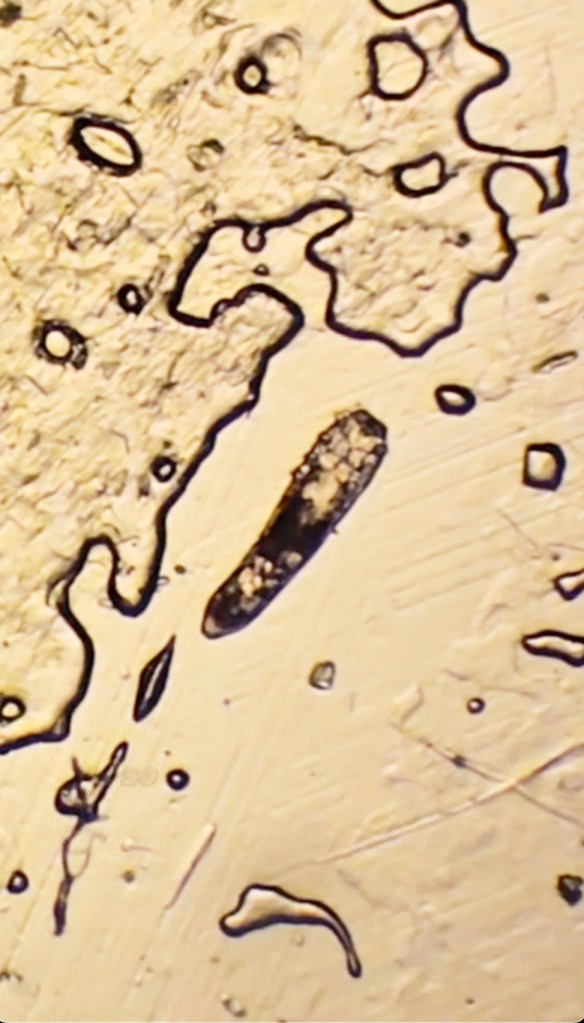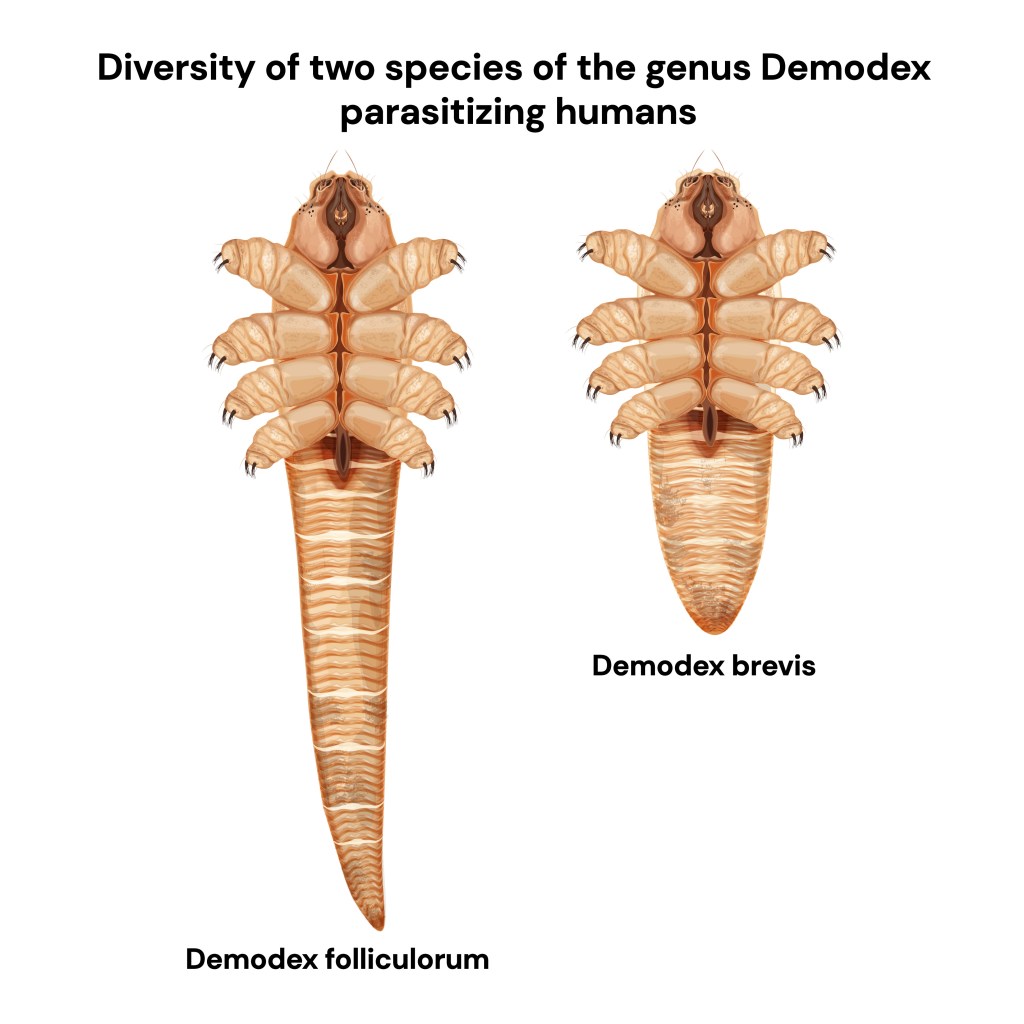Look at these pore souls.
Dr. Scott Walter — a board-certified dermatologist in the Denver area — is raising awareness about Demodex, a type of tiny eight-legged mite that inhabits the hair follicles and oil glands on our face, chest and neck.

“If you’re not familiar, Demodex are the tiny, tiny mites that live inside our hair follicles and oil glands — and get this, they come out at night to eat our dead skin cells and mate,” Walter said. on TikTok on Thursday. “And even wilder, they can sense light with their primitive eyes, so they know the coast is clear to come out and play.”
Almost all adults have these cheeky denizens, research has found.
They tend to be more common in older people and less common in children under 5, although mites can be transmitted through contact with hair and eyebrows and the use of personal hygiene products such as makeup brushes, tweezers, eyeliner and ink. for eyebrows.
Two species affect humans – Demodex folliculorum, which is about a third of a millimeter in length and lives mainly in facial hair follicles, especially around the eyelashes and eyebrows, and Demodex brevis, which is less than a quarter of a millimeter long and . in the oil glands.
To demonstrate the spread of these particular pests, Walter placed pieces of clean packing tape on his forehead and cheeks and examined the remains under a microscope.
He spotted a powerful mite with a “full belly”.
“Fun fact – Demodex mites don’t poop because they don’t have the other end, so they just eat and eat and eat,” explained Walter.

Demodex tend to live about two weeks. One study reported that mites lay their eggs inside follicles or oil glands. They hatch after three or four days and develop into adults in about a week. When the mites die, their bodies decompose inside the follicle or gland.
Most people do not experience Demodex symptoms nor are they aware of these mixed troubles.
However, they have been linked to skin conditions such as rosacea, acne and dermatitis and can worsen vision problems and damage eyelids and eyelashes.
Mark Sandeman, an honorary professor at Federation of Australian Universities, recommends seeing a doctor if you have eyelid inflammation.
“Controlling such reactions can be as easy as limiting the number of mites with a wash or treatment prescribed by a medical professional — just know that completely removing our mite friends is probably impossible,” Sandeman wrote. on The Conversation site in 2022.
#Demodex #mites #living #mating #face
Image Source : nypost.com